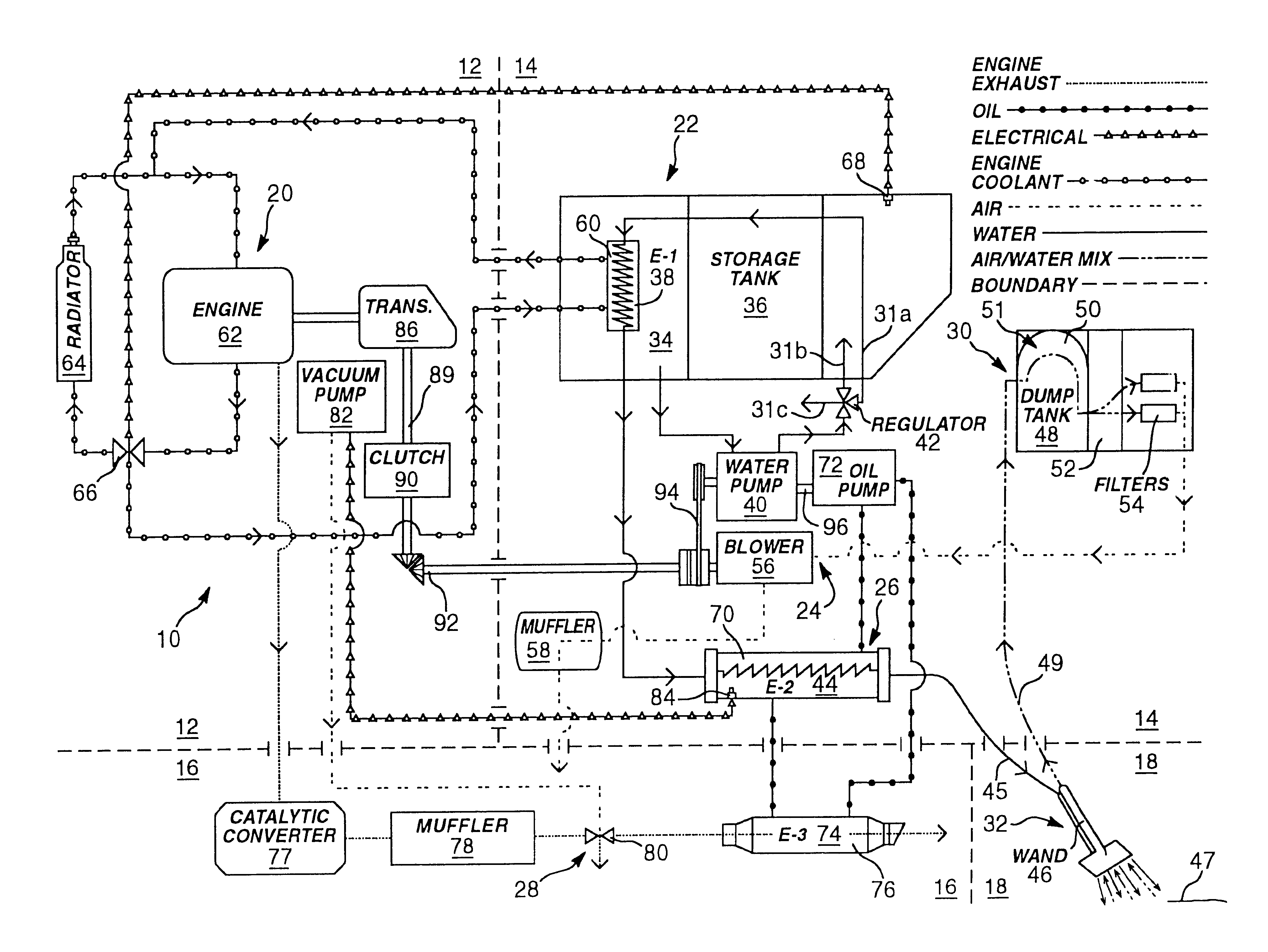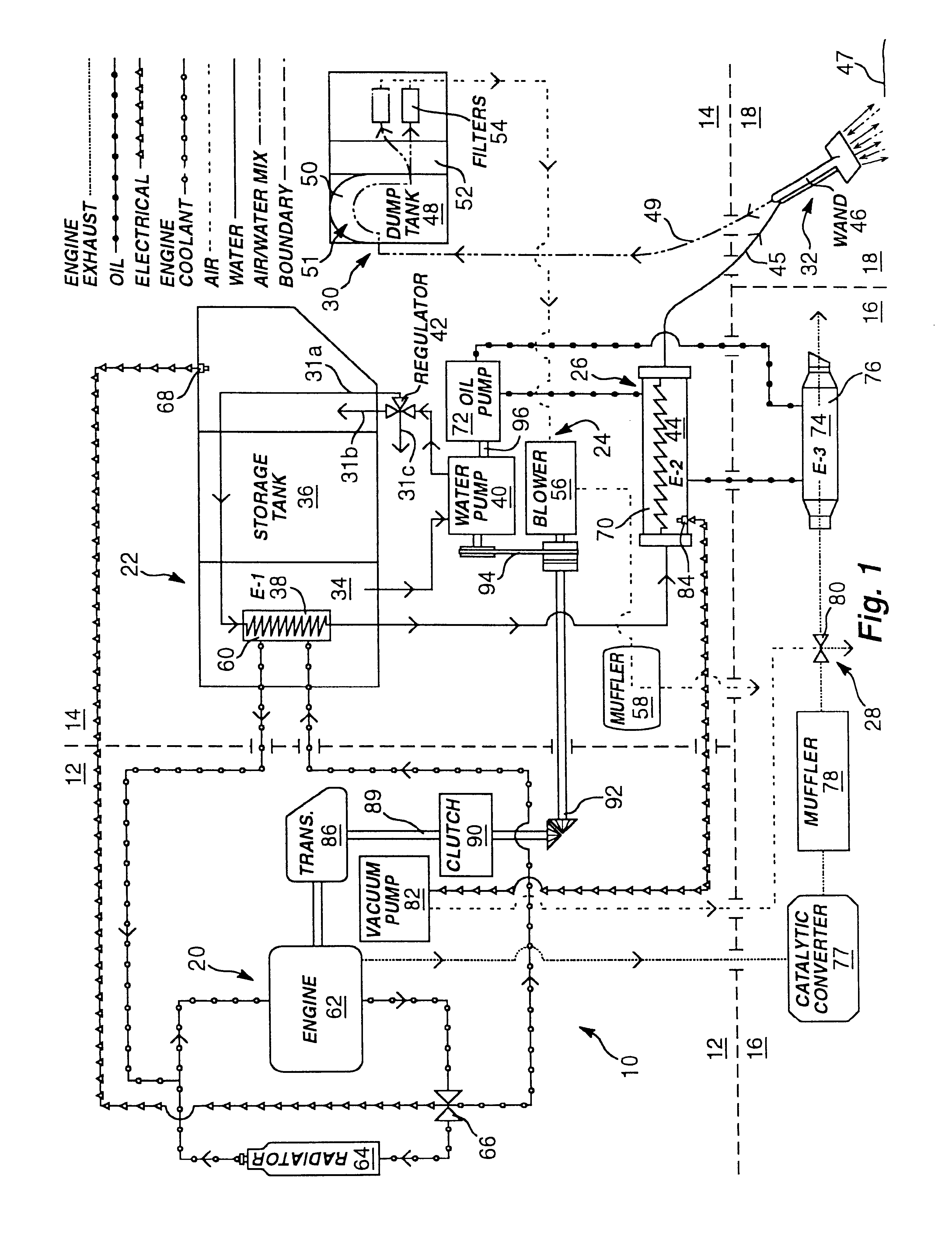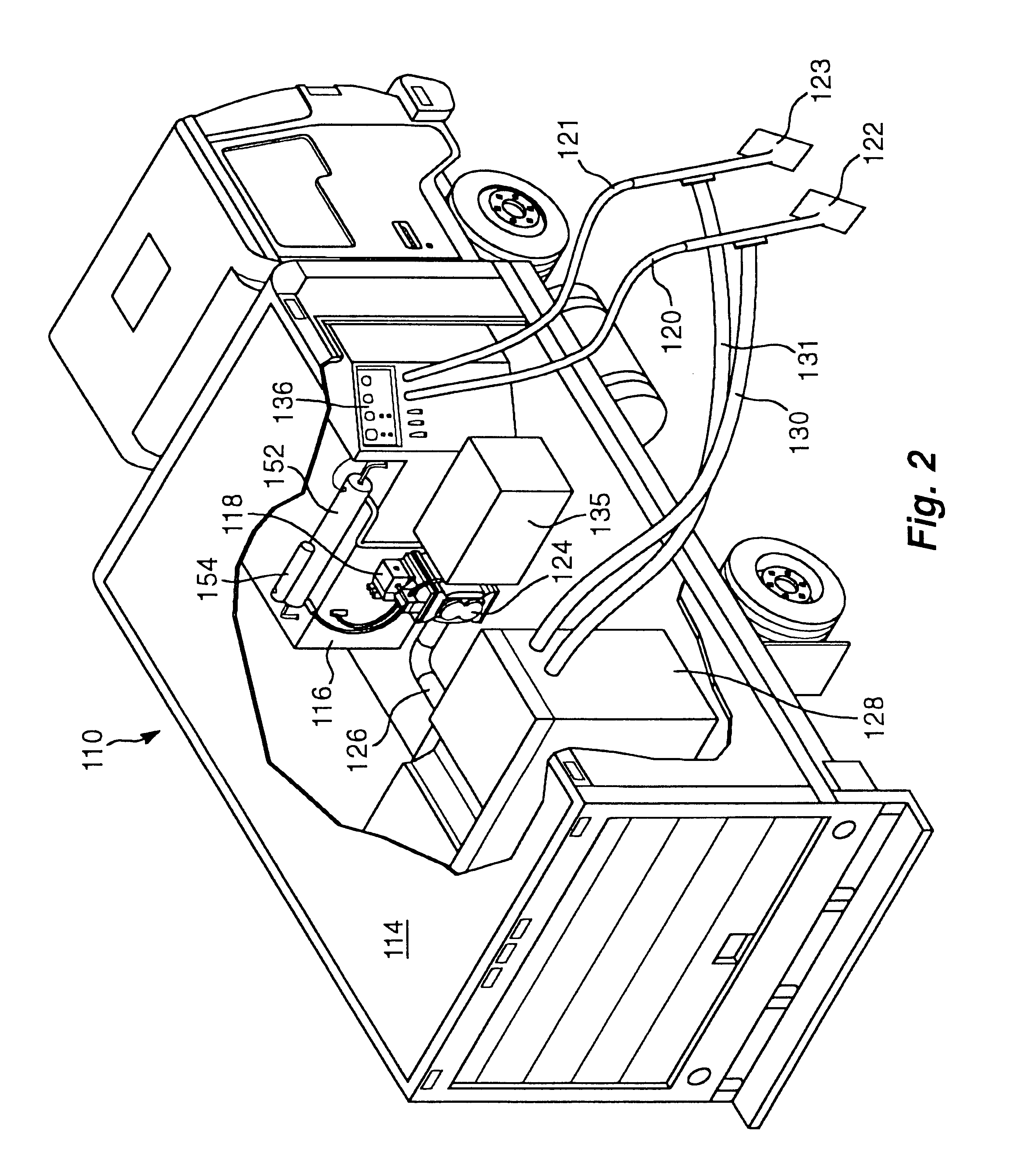Ever since carpets came into common use, people have wrestled with the difficulty of keeping them clean.
Carpet, unlike other fabric in household use, is exposed to an enormous amount of
foreign matter such as
dirt, grass, leaves, sand, dust, mud,
animal hair, and spilled food.
The problem is compounded by both the permanent (e.g. wall-to-wall) installation of carpet and the length of fibers found in many carpets.
Conventional washing and cleaning processes remain ineffective.
Moreover, the energy requirements for the
phase change to steam simply cannot be met by most heating plants for the purpose.
Over-wetted textiles often show signs of reduced strength,
mildew, and
delamination, a process in which the carpet takes on a rippled appearance due to separation of primary and secondary backings.
However, increasing chemical concentrations creates a whole new series of problems.
Also, cleaning chemicals are known to leave residues that cause carpet to re-soil at an accelerated rate by adhering to soiling materials.
In addition, temperatures in excess of 240.degree. F. can permanently yield synthetic fibers, thereby causing
fiber memory loss and ruining the
pile texture of carpet.
As a result, they provide inferior cleaning temperatures, typically in the range of 80.degree. to 120.degree. F. at the carpet surface.
Portable machines are notorious for excessive use of chemicals.
High chemical concentrations are required to clean textiles because of comparatively low cleaning temperatures.
Each has its own set of performance and maintenance problems.
The result is that the best heat exchangers and transfer times do not produce a maximum cleaning fluid temperature above 195.degree. F. in the
heat exchanger, which temperature is substantially reduced by the time fluid reaches a carpet surface.
Since they take energy from the
coolant that passes through the vehicle radiator, they provide an inconsistent, and still too low fluid temperature at the carpet surface.
A lot of energy is available from the engine
coolant, but at a low thermodynamic availability.
Unfortunately, large,
high torque (e.g. V-8),
gasoline-powered engines, were not designed to run stationary at 1500 RPM for hours at a time just to drive the fan belt while carpet cleaners perform their work.
Without a consistent convective air flow,
gasoline engines idling for lengthy periods of time tend to create enormous amounts of
radiant heat that which destroys electrical components and leads to reliability problems.
Although sometimes a significant improvement over portable systems, and slide-in units, the integrated,
truck-mounted systems can also dump substantial
waste heat and
vibrational energy into the vehicle.
These problems have been exacerbated during recent years by the introduction of electronic components and controls about the cab and engine bay of modem vehicles.
The result is a continuing degradation and failure of electrical and electronic components.
Such failures regularly render the engine inoperative until the failed component is replaced.
As with direct-drive systems, the equipment compartment (
bed) and cab of a van become very hot when the engine is run in
stationary mode with only the confined, standard, inadequate cooling system.
The unit is also nearly impossible to isolate mechanically from the body of the vehicle.
As a practical matter, slide-in systems literally self-destruct during a comparatively short and very unreliable life.
Thus, these self-contained, slide-in systems are generally regarded as even more problematic and unreliable than direct drive systems.
Poor reliability and durability should come as no surprise because of the extraordinary amounts of heat rejected by the engines into the environment.
However, for a
small engine (e.g. slide-in unit), the
mass flow rate of exhaust is very low, so overall heat transferred to the cleaning fluid is also low.
Despite their increased mechanical power, currently available direct drive machines remain incapable of maintaining a consistently high cleaning fluid temperature.
However, use of auxiliary burners, such as
propane,
kerosene, diesel, and electric burners, has been declining in recent years.
External heating is cumbersome, inconvenient to set-up, expensive, and possibly even dangerous due to the possibility of fire or overheating.
However, some carpet-cleaning professionals persist in using external heating machines because the co-generating devices (capturing
waste heat from a thermodynamic engine to use as process heat) typically cannot produce a sufficiently high temperature (over 170.degree. F. at the carpet, over 195.degree. F. in the system), sufficient efficiency, nor an acceptable level of reliability.
However, stationary engines for comparatively unregulated, limited use, such as those found in slide-in systems, have not been optimized to the same extent.
As a result, larger slide-in motors consume a great deal of fuel without providing a comparable amount of power or rejected heat required for process heating.
Nevertheless, perhaps the most serious problem for co-generation systems is the failure of their control systems.
Valves, whether driven by solenoids or vacuum, quickly foul with
calcium,
lime,
magnesium, and other precipitates.
Meanwhile, the high environmental temperatures inherent in such systems destroy the electrical and electronic control components.
Direct drive, co-generation machines lack any safe, reliable, and convenient method for conveying the cleaning fluid and the exhaust through a
heat exchanger.
Bringing an engine exhaust line into an enclosed rear cabin of a vehicle, together with the pumping equipment and cleaning fluid, is dangerous.
An inevitable opening or leak in the
exhaust pipe would fill the vehicle with exhaust gases, which are toxic, corrosive, and possible even highly combustible.
Likewise, extending a cleaning fluid line outside the cabin of a van or other service vehicle to access and exhaust line is not a viable solution.
Any water-based cleaning fluid left in the line in
cold weather will freeze when the engine is not running,
bursting the line.
If an operator stops to move furniture, reposition equipment, or make a dry pass to vacuum up excess cleaning fluid, the flow rate of cleaning fluid through a washing
plant will slow or stop.
The resulting temperatures and pressures can harm carpet, destroy equipment, and cause personal injury.
Solutions expelling overheated cleaning fluid either out of the system or into a waste tank when it becomes too hot are inadequate.
One drawback of such a safety device is that the cleaning fluid must be replenished before cleaning can resume.
Anything vented to the
holding tank reduces capacity, and must be dumped along with the collected soiled cleaning fluid.
Thus, dump valve systems are inconvenient and potentially harmful to the environment.
Every day, thousands of gallons of cleaning fluid are wasted in the carpet cleaning industry due to cleaning fluid venting performed in the name of temperature regulation.
Devices that
shut down the system are similarly inconvenient, and often not safe.
A failure in a temperature regulating mechanism can allow the fluid temperature to continue rising to dangerous levels.
Meanwhile, the electrical and electronic control elements, such as sensors, solenoids, and valves, used to detect excessive temperatures and bleed off cleaning fluid or
shut down the system are prone to failure.
Control orifices can be very small and are subject to clogging from
calcium,
lime, and
magnesium deposits from the cleaning fluid.
The high temperatures involved accelerate the buildup of deposits and can damage the wire coils and insulation, causing failure in items such as solenoids.
One more problem that plagues known washing plants involves the method by which mechanical power is transferred from the vehicle engine to the pumps and heaters.
No carpet cleaning system is known to use any power
takeoff coming directly from the engine or from a transmission or
transfer case.
Transmissions are delicate and expensive.
Just as engines are overworked, and improperly worked in such an application, gear systems would be overworked and be subject to mechanical failures due to repeated engagement and disengagement of the PTO gears if operated to control connection of mechanical systems to
engine power.
 Login to View More
Login to View More  Login to View More
Login to View More 


